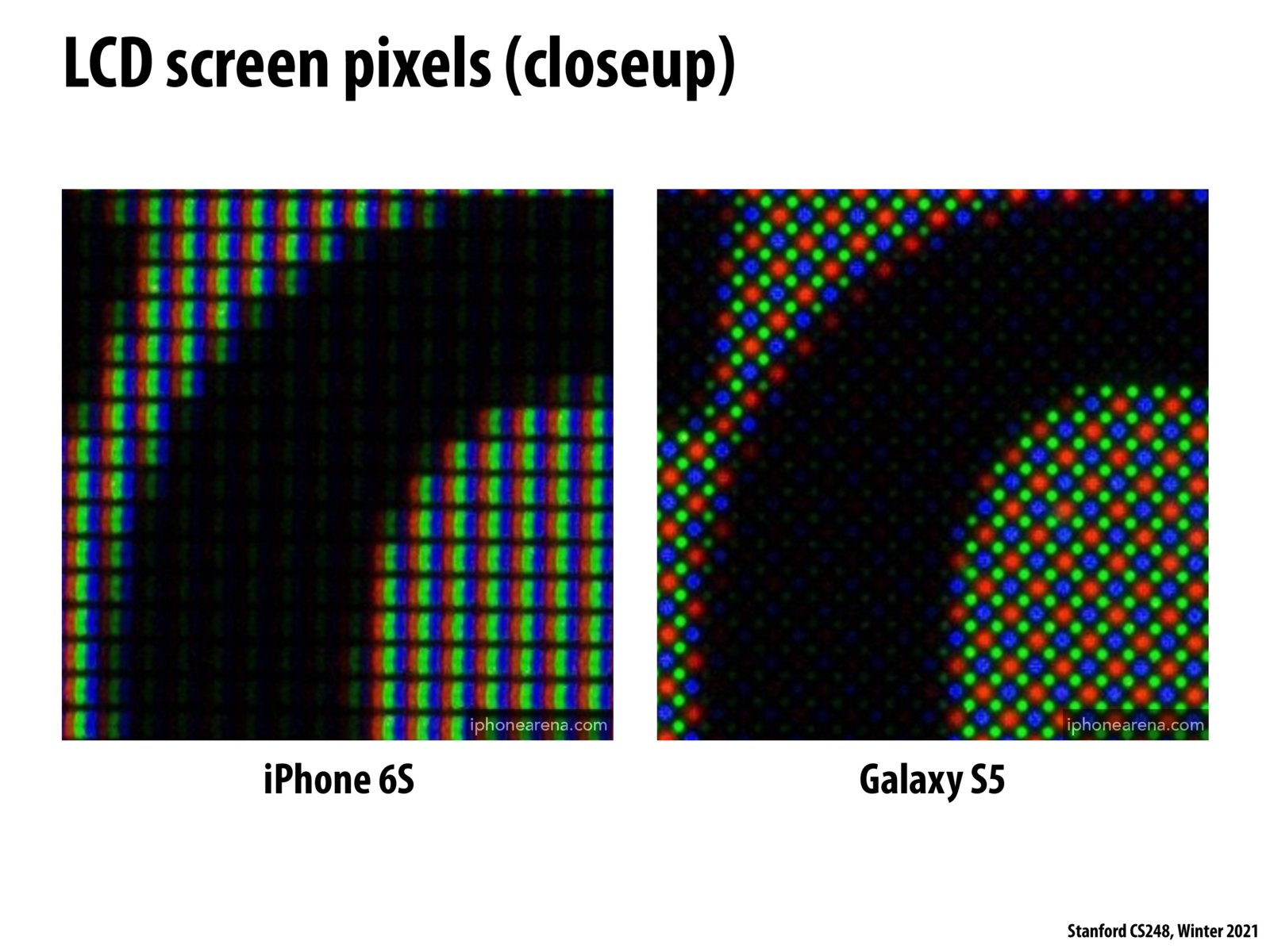


I thought it was interesting to see more greens distributed on the surface of Galaxy S5. I guess this has to do with our eyes more sensitive to green.
@movissup. Correct! And we'll talk about this more in the color lecture. Most sensors and displays treat green with higher spatial resolution than other color channels.

How close up are these pixels? Commenting late but the pixels we looked at in lecture 2 were uniform in color. I would assume that this view is much closer up? Or is this a different type of screen?
@jtmoore. These are a lot closer than what I showed you in lecture 2. (You are referring to the image here http://cs248.stanford.edu/winter21/lecture/drawtriangle/slide_54.
The Lecture 2 image is by my iPhone, these are professionally done, so they are close enough to distinguish the red, green, and blue filters on the subpixels.

I didn't understand how the green, blue, and red subpixels worked together to display a color and I was confused about what color the pixels in the images above are displaying. I googled it and apparently red, blue, and green lights together fool us into thinking we're seeing white. This is because our eyes have three different cone types - red, blue, and green. White light usually reflects all colors uniformly and will stimulate these three cones uniformly. However, if we stimulate these three cones with just red, blue, and green light, our eyes can't really tell the difference. This isn't the case if someone is a "Tetrachromat" and has 4 cones instead of three - but that's rare.

@manuforo. The Asymmetric Color-matching Experiment might be something that you are interested in. Here is a great resource about this experiment for your reference:
https://foundationsofvision.stanford.edu/chapter-9-color/#Color_Constancy:_Experiments
Please log in to leave a comment.
I feel an obligation to post this Vsauce video on this topic that blew my mind as a twelve year old. It's what I thought of when Kayvon talked about how we can take of advantage of the ways our perception can be tricked.